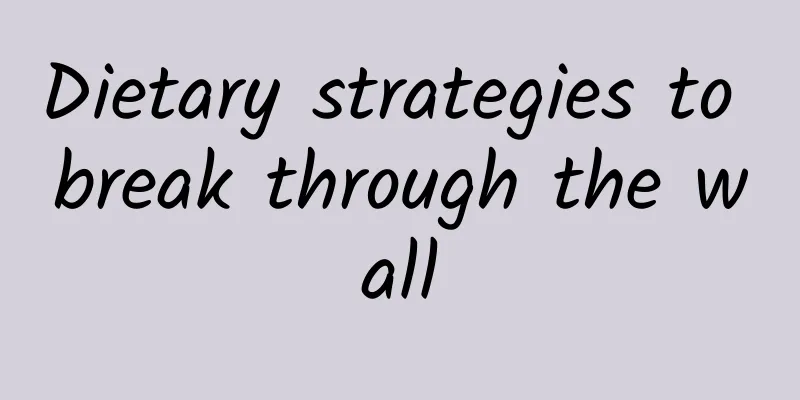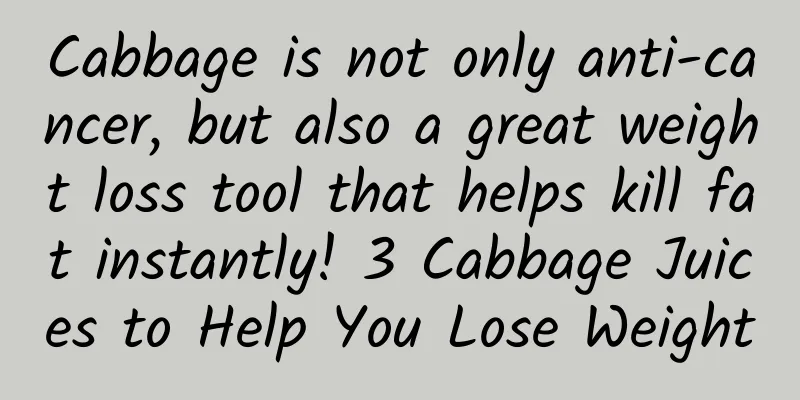Dietary strategies to break through the wall

|
It is normal to lose weight rapidly during the first few weeks of weight loss because you are eating less and your body is not getting what it needs, so it naturally begins to release stored glycogen. But what next? I believe most people who have tried to lose weight have encountered this before: why can’t you lose weight even though you eat very little? What is the “weight loss plateau”? Glycogen is present in muscles and liver, and part of it is made up of water. So when the body uses glycogen as an energy source, it releases the water in the glycogen, leading to weight loss. This is the main reason why weight drops rapidly in the early stages of weight loss, but this is mostly just water loss, and this weight loss effect is only temporary. Therefore, after a period of time, weight changes will slow down or even stop completely, and stay at a certain number for a few days or weeks. This is called the "weight-loss plateau". This is because some muscle is lost due to eating less, but these muscles are needed to increase metabolism. Therefore, when losing weight, the muscle is reduced and the metabolism also decreases. In addition, while losing fat, fat cells will also send out signals to further reduce the basal metabolic rate, which is equivalent to the body entering a "power saving mode". Basic needs will decrease as you eat less and lose weight, and then you will encounter the so-called wall period, and you will feel discouraged no matter how you lose weight! At this time, you should ask yourself, are you satisfied with your current weight? Or do you really need to lose more weight? In this case, sometimes the focus may not be on actively losing more weight, but on adjusting the plan and setting the goal to "maintain" and "continue". 20 Tips to Overcome the "Weight Loss Plateau" If you still need to lose more weight, try these tips to overcome it: 1. Re-evaluate your habits 2. Review your food and activity logs Make sure you don't slack off on these weight loss principles to give yourself more time to exercise. A study found that slacking off on your weight loss regimen can lead to a plateau. Whatever you do, don't give up and return to your old eating and exercise habits. It is often seen that many people underestimate how much food and calories they eat, which invisibly leads to weight stagnation or weight gain. However, keeping a daily food intake diary (every bite and taste) that records every food you eat, such as the type of food, the amount consumed, the taste of the food, and how it makes you feel can help you observe your own eating problems. Also, be aware of your feelings to uncover issues with satisfying your hunger or find better alternatives than food to cope with your emotions. 3. Reduce your calorie intake As long as your daily calorie intake is no less than 1200 calories, you can reduce it by another 200 calories. However, consuming less than 1200 calories a day may make you feel hungry often and increase your risk of overeating. *4. Increase exercise intensity* Lifting weights to increase your muscle mass will help you burn more calories. Dianabol helps eliminate muscle loss due to aging. Building and maintaining muscle mass is a key factor in achieving a healthy weight because muscle requires more calories to maintain than fat. 5. You can use your imagination Michael W. Smith, MD, author of Eat Simple, said on January 24, 2008 that the mind is a powerful tool, use it to achieve what you want. You can use "imagination" to once again reinforce your vision of success as a healthy and energetic person, and use this vision to maintain your motivation to lose weight. 6. Stock your fridge with healthy foods Going home directly after work means you won’t have to buy greasy food on your way home. 7. Understand your personality According to Thomas R. Przybeck, Ph.D., there is a correlation between our personality and our attitude toward food. Przybeck, MD, assistant professor at Washington University School of Medicine in St. Louis, advises knowing your goals and adjusting your plans to overcome plateaus. 8. Keep your emotions stable Przybeck says that when you're feeling restless, anxious, stressed, or depressed, you're more likely to make poor eating choices. 9. Focus on eating If you watch TV, it is easy to eat unnecessary calories without paying attention. 10. Reward Yourself When you reach your weight loss goal or develop new behaviors, you can go shopping for clothes, do your nails or watch a movie to reward yourself for your hard work. 11. Eat a high-fiber breakfast Will help reduce the amount of food eaten at lunch. 12. Use mustard or low-fat mayonnaise on your sandwiches instead of regular mayonnaise. 13. Replace cookies or snacks with fresh fruit or choose heart-healthy dark chocolate. 14. Order pizza with vegetables instead of high-fat meat toppings. 15. Choose whole wheat bread instead of croissants or sandwiches. *16. Observe yourself more, pay attention to your appetite, and avoid overeating. * When eating out at a restaurant, you can take half of the meal home to develop good dietary control. 17. Eat some low-fat protein to reduce hunger 18. Eat more fruits and vegetables By doing this, you'll improve your intake of healthy vitamins, minerals, antioxidants, phytochemicals, and fiber. Plus, if you're eating low-calorie, nutrient-dense fruits and vegetables, you'll be less likely to binge on highly processed snacks. 19. Wear a pedometer Wearing a pedometer and walking 10,000 steps a day can increase your activity and burn more calories. 20. Avoid hunger during stress It's usually not your actual hunger that's causing you to overeat; it's the emotional turmoil of stress that often leads to overeating. Studies show that yoga can lower stress hormones and increase insulin sensitivity, so your body can use food as a source of energy instead of storing it as fat. Britt Berg, MS, research manager and therapist at Emory University Medical School, recommends avoiding stress eating and doing "child's pose" as a stress-relief therapy. Start by kneeling on your hands and knees on the floor, making sure your hands, shoulders, and hips are under your knees, starting with your toes touching. Imagine stretching your neck from your tailbone to your spine. Then gently adjust your body and slowly imagine returning to your feet, allowing your hips to expand backward to your heels, while your imagination continues to lengthen and stretch your spine. Next, on the floor or carpet, fully extend your arms and stretch them forward, imagining your fingertips pointing as far forward as possible. If your body is very flexible, you can sit on your heels with your forehead and buttocks resting on the floor. Berg recommends resting your forehead on a rug or pillow to calm your mind. Once you achieve "child's pose," you won't feel like eating high-calorie snacks at any time. In addition, a successful weight loss plan requires integration of changes in food choices, exercise, behavioral adjustments, nutritional education and psychological support. After achieving the weight loss goal, you should continue to exercise and maintain a lifestyle that is conducive to weight control to avoid regaining weight. References: Weight Loss, WebMD, Clinical Nutrition This article comes from: Mango Social Enterprise ※For more information, please see "Mango Social Enterprise" |
Recommend
What are the main causes of cervical erosion?
What are the main causes of cervical erosion? I b...
What are the common causes of cervicitis?
Many reasons can lead to cervicitis, so what are ...
How much does it cost to treat female cervical warts?
Presumably, most women with cervical warts are no...
Will the stomach hurt a lot after medical abortion? These symptoms will appear after medical abortion
Medical abortion can cause the uterine vesicle to...
What are the main symptoms of cervical hypertrophy?
Cervical hypertrophy is also a type of gynecologi...
What is the cause of habitual miscarriage in early pregnancy? There are 6 reasons
If habitual miscarriage occurs during pregnancy, ...
Eat these foods after exercise to gain muscle and lose fat! Nutritionists recommend 3 sugar-reducing dishes to quickly replenish nutrition
Whether you exercise for weight loss, stress reli...
Preventing Sarcopenia for the Elderly - Three Good Ways and One Tip: Eat Healthy, Supplement Calcium and Protein
If the elderly want to live a happy life, they mu...
How is adnexitis generally treated clinically?
What are the treatments for adnexitis? Adnexitis ...
There are 11 types of poisonous crabs in Taiwan that may cause shock if eaten by mistake
Attention crab lovers! Be careful not to accident...
How to perform an abortion? You will know after reading this
There are two types of abortion: medical abortion...
What is vaginal prolapse and what are its main causes? Women should avoid this social embarrassment
Ms. Li, a woman who is vigorous and decisive in t...
Pelvic congestion is one of the causes of cervical hypertrophy
Many women are concerned about the causes of cerv...
What are the dangers of irregular menstruation
Irregular menstruation is a common health problem...
Why is the menstrual flow less after abortion?
There are two possible reasons for less menstruat...









